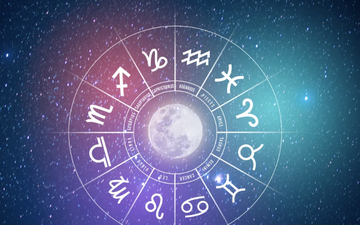
Sharks, especially white sharks, aroused the most fear in humans after the release of the Jaa film in the summer of 1975. The movie built the plot on a giant shark that terrorizes a coastal community and was scary enough to scare all people. In many other films, sharks are portrayed as antagonists. Where does our fear of sharks come from?
Why are people afraid of sharks?
David Ropeik, a fear perception consultant and author of "How Dangerous Is It Really?" Says people don't have to be afraid of the shark. But fear does not always match the facts.
Fear of the shark is known as galeophobia and in short, predatory fish are scary: they have sharp teeth, feel blood, shred within seconds.
There are more than 465 shark species, ranging from 17 centimeters to 50 meters long. Many eat fish, mollusks, plankton, mammals and other sharks - in short, people are not on the menu.
Humans are more likely to be killed by a cow than to die in the shark's jaws. But fear does not necessarily match the facts, and fear of the shark is more associated with an emotional state than with reality.
Fear is about not having the situation under control. People are terrified at the idea of facing something that is stronger than them. According to experts, fear is more about the nature of the experience (sea, breathing difficulty, not swimming quickly, not responding easily, finding it difficult to defend yourself) rather than the agent (shark).
Where did this fear come from?
Fear is not necessarily something that one is born with, but it is something that has developed over time. Babies are not afraid of snakes and heights, but adults do. With age, the brain becomes more sensitive to fear stimuli.
In ancient times, humans did not know which animals were a threat to them and this is an important fact that kept them alive. They got used to the fear, adjusted and defended themselves. Experts point out that humans are more prone to fear of biological things, such as animals, for example, and this is an inherited fear from an early age.
If you got here, let us remind you of another article.
In July of a year ago, a girl named Kait Hanson swam with sharks and later shared with Insider the whole not-so-ordinary experience: "6 things I learned after swimming with sharks."

1. All you know about sharks is wrong.
In 2017, there were only 5 deadly attacks by sharks. People need to know their true look and not just have the scary looks they have faced in movies or media.
2. Sharks are not wild.
They really are portrayed as "wild". In fact, the word "savage" suits human behavior (but that's another matter). Sharks have a very important role in the ecosystem, as by following sick, injured or weak fish, they serve a healthier environment by preventing the spread of various diseases.
3. Sharks do not eat people.
This is probably the most interesting fact. Sharks are curious species and love to explore the surrounding environment. Rare are the cases when sharks regard humans as prey. In 90% of the cases when they face a man, they have no interest. An interesting fact: The bigger the shark, the more "shameful" it is. It is easier to attract small sharks to boats, as large ones tend to hide from humans and boats.
4. Yes it's true - Sharks are drawn to blood.
... but not from your blood. Their intention is not to eat people. Just one of the senses used for food is the smell. However if it is the blood that worries you, learn that sharks also use hearing to be food-oriented.
5. It's not good to swim at dawn or dusk.
At that time, sharks are generally nourished, and since they start with immediate needs, you should avoid them. However, this is especially true for white sharks or tigers, as 95% of sharks are not interested in people swimming.
6. Realizes that you have a lot more courage.
However convinced you are that it is not dangerous, when surrounded by such species, your heart beats hard. In those moments, you realize how much human strength and courage you have.
Source: National Geographic, Insider





